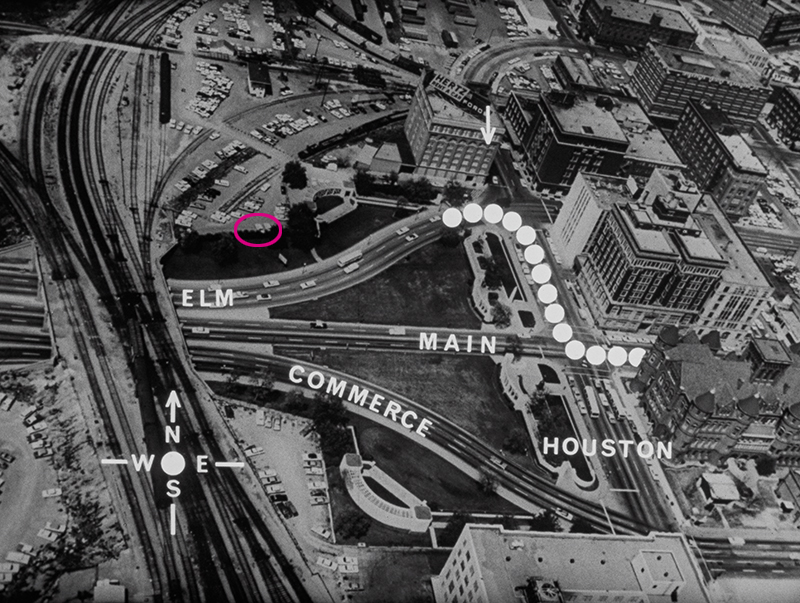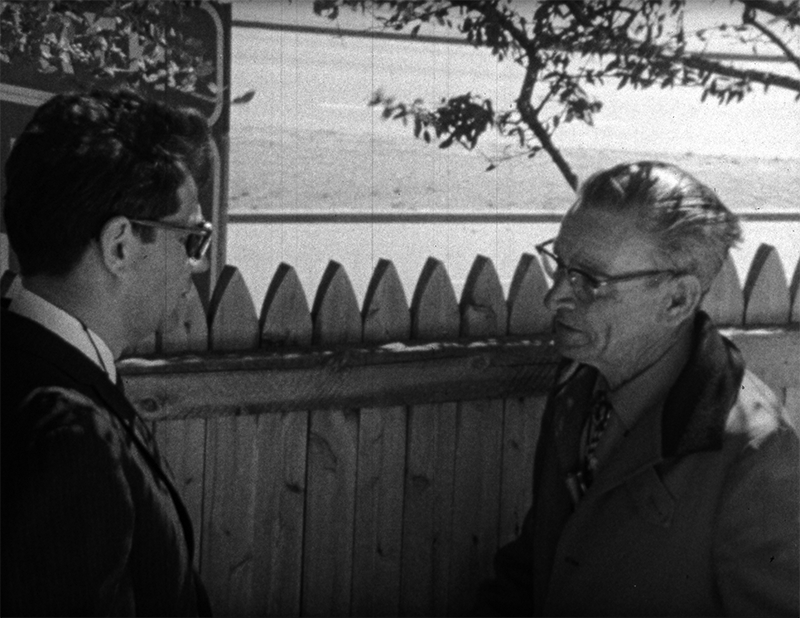In 1967, Impact Pictures released Rush to Judgment, a documentary about the assassination of President John F. Kennedy. The film, by lawyer Mark Lane and filmmaker Emile de Antonio, is based on Lane’s book of the same name. Lane had been one of the earliest critics of the Warren Commission and its report, and had for a time represented Lee Harvey Oswald at the behest of Oswald’s mother. Both the book and the film were Lane’s attempt to provide a defense of Oswald, who was arrested within an hour of the shooting and murdered in police custody two days later.
Although there have been many non-fiction and fiction features, series, and TV shows about the tragic events in Dallas on November 22, 1963, Rush to Judgment has never been widely available in its complete form until now. A 4K digital restoration by the Wisconsin Center for Film and Theatre Research at the University of Wisconsin-Madison and Sphinx Productions is being released by Films We Like, and it is a rewarding, if sometimes difficult, watch.
An early example of the indie doc, the film is unpolished and almost painfully straightforward. It contains no re-enactments or motion graphics and has no musical score. It mostly consists of ordinary Americans talking about what they witnessed, and (spoiler alert) almost none of it matches the official version of events set down in the Warren Commission report. This is the beginning and most fundamental dissension from which all others derive.
If you believe the Warren Commission report, nothing in Rush to Judgment will convince you otherwise. But if you’re not sure, or you don’t believe it, stick with this doc. It starts slow but builds to a consensus that directly contradicts and exposes the many flaws in the Commission’s motivation, process, and conclusions. For instance, as bystander after bystander after bystander, including WWII veterans, states their conviction that the shots that killed President Kennedy came from the train yard north of Elm Street (pink circle), it becomes abundantly clear that the Commission’s claim that the shots came from the Texas School Book Depository (white arrow ) is at best a mistake, and at worst, a deliberate lie, forged to support a predetermined solution to a crime. (Note that these people were testifying well before the Zapruder film was made available to the general public in 1975.) Few of these people were called before the Commission, and those who did appear were misquoted.


Another of the report’s assertions, that the Dallas police had no idea who Jack Ruby was when he walked up and shot Oswald, is creditably denied when another set of witnesses recount the many encounters between the police and Ruby.
Rush to Judgment makes its case without being flashy. You’ll have to pay attention to absorb all the details it is conveying. But the cumulative effect of its evidence is convincing and its implications are devastating. Many of the folks being interviewed look uneasy, nervous, or even scared. In this pre-reality TV era, they didn’t get paid, and they had no possibility of becoming famous. In fact, attention might have been hazardous to their health. Some were warned to keep quiet, and several would be dead in bizarre ways within a few years. One interviewee, Lee Bowers, who probably had the best view of President Kennedy’s murder, died in a one-car accident before the film was even released. So why would these people take the risk of talking to a Yankee lawyer like Mark Lane, first for a book and then on camera? I think what happened in Dallas on that Friday 60 years ago affected them deeply and they needed to correct the official record, regardless of the consequences to themselves.
One of the ways to debunk a conspiracy theory is the old saw, “It would take too many people for it to stay secret.” Rush to Judgment shows that, in the case of the murder of President John F. Kennedy, people could have just done what they were told and never given it a second thought. Nineteen sixty-three was a different time, as you will realize when you see a few of the witnesses recount what they saw with their own eyes, and then state unequivocally that they believe the Warren Commission report, which states as fact the exact opposite of what they saw. It seems to me that it is this very murder that, for better or for worse, started a change in mainstream society away from blind acceptance of authority.
Rush to Judgment is screening in theatres all over the country on November 22 and will be available to rent and purchase on iTunes and Vimeo starting December 5.

This looks fascinating. Thanks for the recommendation!
Question: Does it trouble you that there are still so many questions and contradictions surrounding the death of JFK?
You’re welcome! Yes, absolutely, I’m troubled by that, because I think that’s exactly why the truth might not ever be known.